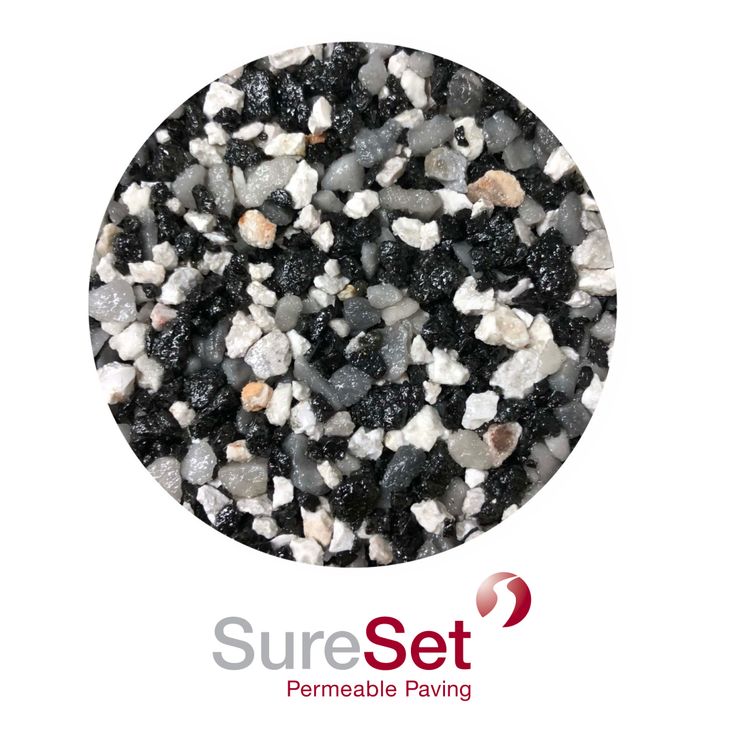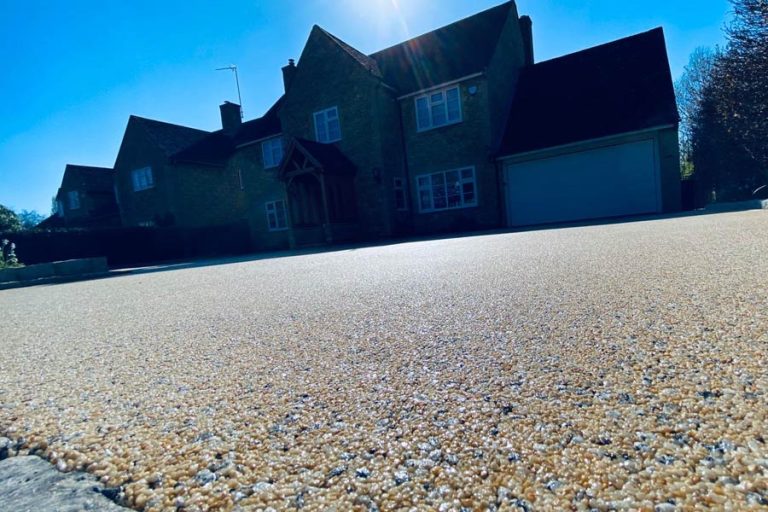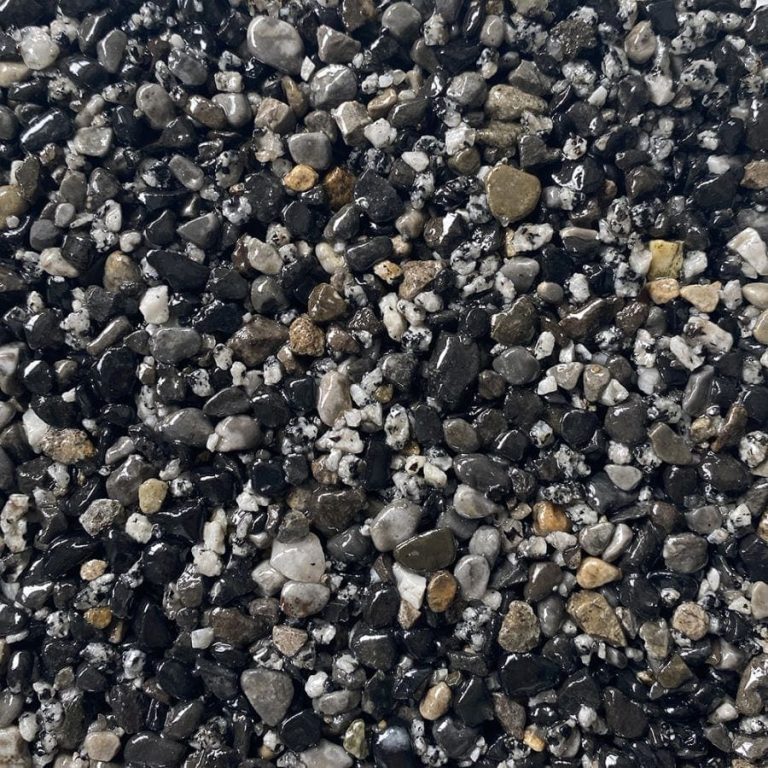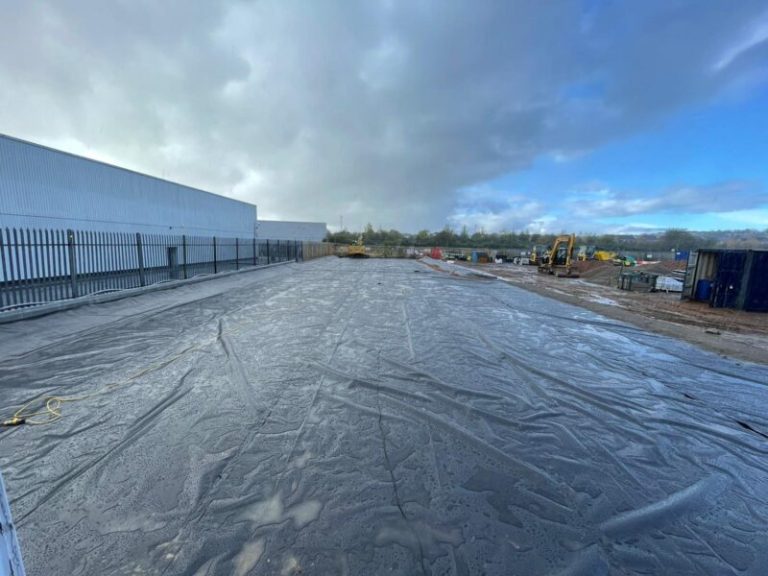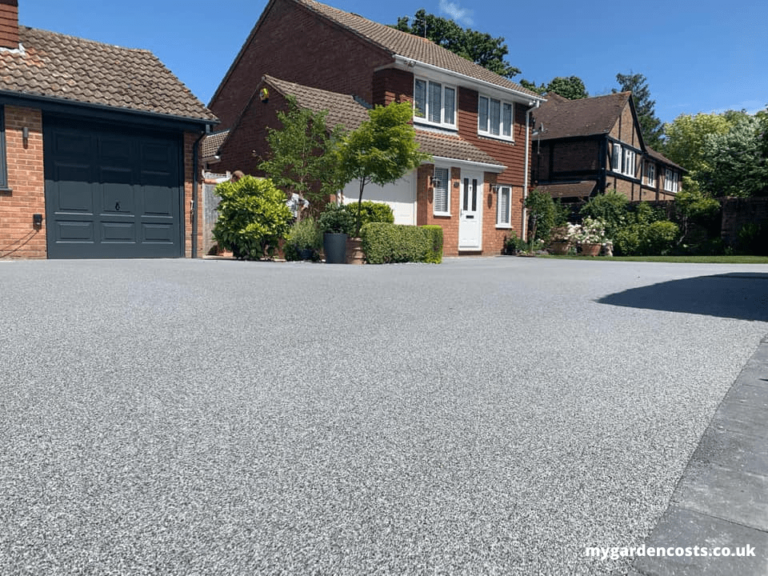Permeable Resin Bound Paving the Future
Permeable resin-bound surfaces offer a compelling alternative to traditional paving, boasting a unique blend of environmental benefits and aesthetic appeal. These innovative surfaces are meticulously crafted from a combination of carefully selected resins and aggregates, allowing for superior water permeability. This detailed exploration delves into the intricacies of permeable resin-bound construction, from its core components to its varied applications.
The key components and materials used in constructing permeable resin bound surfaces play a crucial role in its performance and longevity. Different types of resin binders, aggregates, and sub-base preparations contribute to the unique properties of each permeable resin bound system. Furthermore, the manufacturing process is meticulously designed to optimize water permeability and ensure a robust, long-lasting surface.
Introduction to Permeable Resin Bound
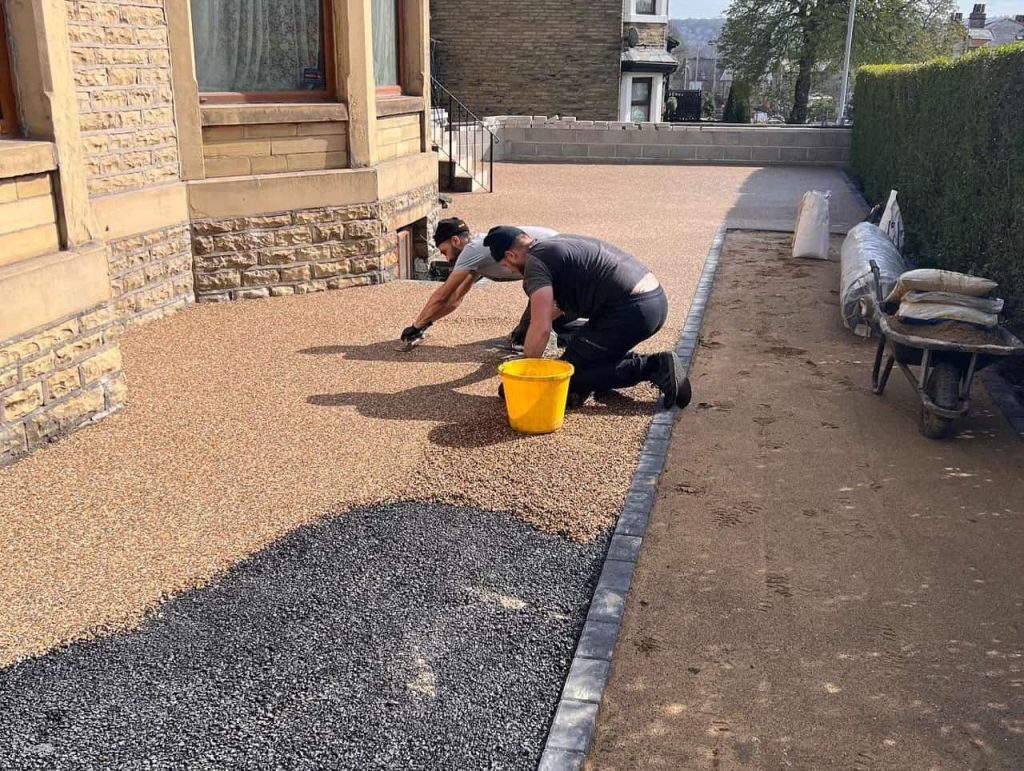
Permeable resin-bound surfaces are engineered paving materials designed for durability and water permeability. These surfaces are gaining popularity for their ability to manage stormwater runoff, reduce erosion, and enhance pedestrian and vehicular safety. They offer a practical alternative to traditional impermeable pavements while maintaining aesthetic appeal.
These surfaces are composed of a mixture of aggregate materials, a binding resin, and sometimes additives. The key components and their specific characteristics determine the final properties of the permeable surface. The integration of these components leads to a robust and aesthetically pleasing pavement suitable for various applications.
Key Components and Materials
The core components of permeable resin-bound surfaces typically include:
- Aggregates: Crushed stone, gravel, or recycled materials, such as concrete or asphalt, form the base of the surface, providing structural support and contributing to its permeability. The size, shape, and type of aggregate directly influence the surface’s texture, strength, and drainage characteristics.
- Binding Resin: A high-performance polymer resin acts as the binder, holding the aggregate together and creating a strong, durable surface. Different resins offer varying properties, such as resistance to chemicals, UV degradation, and temperature fluctuations.
- Additives: Depending on the desired properties, various additives may be included, such as colorants, anti-slip agents, or stabilizing agents. These additives can customize the aesthetic appeal, enhance safety, and improve overall performance.
Manufacturing Process
The typical manufacturing process involves several key steps:
- Preparation of Aggregates: Aggregates are screened, cleaned, and sized to ensure uniformity. Proper sizing is critical to ensure the desired permeability and structural integrity.
- Resin Mixing: The resin is meticulously mixed with the aggregates and any necessary additives in a controlled environment. Proper mixing is essential to ensure uniform distribution of the resin and aggregates.
- Layering and Compaction: The mixture is spread and compacted in layers to achieve the desired thickness and density. Careful compaction prevents voids and ensures a stable surface.
- Curing and Finishing: The surface is allowed to cure according to the resin’s specifications. Finally, the surface is finished to achieve the desired aesthetic and texture.
Applications
Permeable resin-bound surfaces are suitable for a wide range of applications, including:
- Parking Lots: Providing a durable and permeable alternative to traditional asphalt parking areas, reducing runoff and improving stormwater management.
- Pedestrian Areas: Offering a visually appealing and safe surface for walkways and pedestrian zones, contributing to the overall aesthetic of urban spaces.
- Driveways: A sustainable solution for driveways, enabling effective water drainage and reducing the impact on surrounding landscaping.
- Recreational Areas: Creating durable and permeable surfaces for playgrounds, sports fields, and other recreational areas, enhancing safety and environmental sustainability.
Types of Permeable Resin-Bound Surfaces
Various types of permeable resin-bound surfaces are available, each tailored to specific needs and applications.
- High-performance Resin Bound Surfaces: These surfaces exhibit superior strength, durability, and resistance to various environmental stresses, making them suitable for high-traffic areas and demanding conditions. They often incorporate specialized resins and additives for enhanced performance.
- Low-Maintenance Resin Bound Surfaces: These surfaces are designed for minimal maintenance requirements, with a focus on longevity and resilience to environmental elements. They typically utilize durable materials and formulations that resist weathering and degradation.
- Colored Resin Bound Surfaces: These surfaces offer a wide range of aesthetic options, with various colors and textures to complement diverse design schemes and preferences.
Benefits of Permeable Resin Bound
Permeable resin-bound paving offers a compelling alternative to traditional, impermeable surfaces. Its advantages extend beyond aesthetics, encompassing significant environmental and practical benefits. This approach to surfacing presents a promising solution for modern infrastructure and urban development.
Environmental Advantages
Permeable resin bound surfaces excel in managing stormwater runoff. Unlike sealed surfaces, they allow water to infiltrate the ground, reducing the strain on local drainage systems and mitigating the risk of flooding. This characteristic is particularly valuable in areas prone to heavy rainfall or rapid urban development. Furthermore, the use of permeable surfaces promotes healthier soil conditions and supports local ecosystems. Reduced runoff can also contribute to groundwater recharge, which is crucial in maintaining a balanced water cycle.
Aesthetic Appeal and Design Flexibility
Permeable resin bound paving offers a wide spectrum of design options. From intricate patterns to simple, contemporary designs, the flexibility of the material allows for bespoke solutions that integrate seamlessly with existing surroundings. The material’s inherent durability and aesthetic qualities enable the creation of visually appealing and long-lasting paving solutions. The ability to incorporate a wide array of colours and textures further enhances design possibilities, creating a more attractive and functional environment.
Long-Term Durability and Maintenance Requirements
Permeable resin-bound surfaces demonstrate exceptional durability. The resin-based binder provides a strong and resilient surface, resistant to cracking and wear. The material’s inherent properties contribute to its longevity, resulting in minimal maintenance requirements. Regular brushing and occasional pressure washing are often sufficient to maintain the aesthetic appeal and functional integrity of the paving. These low-maintenance aspects are a significant advantage over traditional paving materials that require more frequent and costly repairs.
Cost-Effectiveness Compared to Alternatives
The long-term cost-effectiveness of permeable resin-bound paving is a key consideration. While the initial investment might be slightly higher than some traditional alternatives, the reduced maintenance needs and long lifespan often result in lower overall costs over the project’s lifecycle. Factors like reduced stormwater management costs and minimized repair expenses contribute to the long-term financial viability of this paving option. Consideration of the lifecycle costs, including material, installation, and maintenance, is crucial when comparing the cost-effectiveness of permeable resin-bound paving to other options.
Performance in Different Climates
Permeable resin-bound surfaces exhibit consistent performance across diverse climates. The material’s resilience allows for effective use in various temperatures, from extreme heat to freezing conditions. While performance might be subtly affected by variations in humidity and precipitation, the material’s inherent durability generally ensures consistent functionality. Studies have shown the resilience of permeable resin-bound surfaces in a variety of climatic conditions, demonstrating their suitability for a wide range of applications.
Construction and Installation
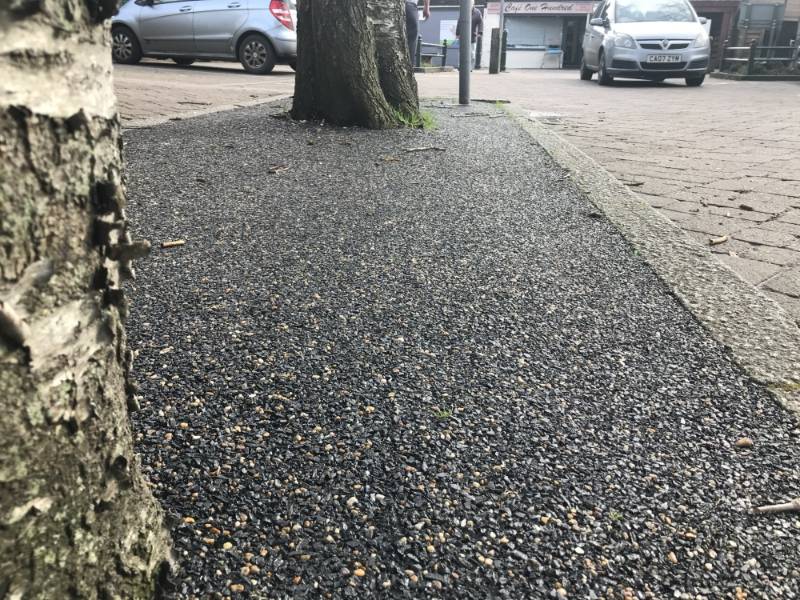
Source: thenbs.com
Permeable resin-bound surfaces require careful planning and execution throughout the construction process. Proper installation is critical for achieving the desired performance characteristics, such as permeability, durability, and aesthetic appeal. Adherence to established procedures and quality control measures ensures a long-lasting and effective surface.
Sub-base Preparation
Thorough sub-base preparation is paramount for a successful permeable resin-bound installation. This involves ensuring a stable, level, and compacted base to prevent future settlement and cracking. The sub-base should be free of organic matter, debris, and unevenness. This is often achieved through excavation, leveling, and compaction.
- Excavation: Remove topsoil and any existing unsuitable material to a specified depth. This depth is crucial for achieving the desired compaction level and ensures the sub-base is stable and free of organic material.
- Compaction: Compact the sub-base using suitable equipment to eliminate voids and ensure a dense foundation. Appropriate compaction methods, such as mechanical tampers or vibratory rollers, are essential. This ensures that the resin-bound surface sits on a stable and level base, preventing future settlement.
- Leveling: Ensure the sub-base is perfectly level to prevent uneven settling of the resin bound layer. This can be accomplished through grading techniques and using appropriate tools and equipment. A level sub-base is essential for achieving a uniform and aesthetically pleasing surface.
- Material Removal: Remove all organic matter, such as roots, vegetation, and debris from the sub-base. Organic material can affect the sub-base’s structural integrity and the overall effectiveness of the permeable resin bound surface.
Resin Binder Application
Applying the resin binder uniformly is crucial for a high-quality permeable resin-bound surface. This involves precise application techniques to ensure a consistent coating. The binder should be applied in thin, even layers to prevent excessive build-up and ensure proper penetration into the aggregate.
- Mixing: Ensure the resin binder is thoroughly mixed according to the manufacturer’s instructions to achieve a homogenous mixture. This homogenous mixture is essential for consistent performance and application.
- Application: Use appropriate tools, such as sprayers or trowels, to evenly distribute the resin binder over the prepared sub-base. The rate of application should be controlled to avoid uneven thickness and prevent pooling.
- Seeding/Aggregates: Incorporate the selected aggregate immediately after the resin binder has been applied. The aggregate must be uniformly distributed to create a consistent surface and prevent voids. The type of aggregate used will determine the final aesthetic and performance characteristics.
Tools and Equipment
A range of tools and equipment is needed for proper installation. The specific tools will depend on the project scale and the type of aggregate being used.
- Excavation Equipment: This may include shovels, excavators, and other earth-moving machinery. The choice of equipment will depend on the scale of the project.
- Compaction Equipment: Vibratory rollers, plate compactors, and other compaction tools are necessary to ensure a dense and stable sub-base.
- Mixing Equipment: For larger projects, specialized mixing equipment may be required to ensure proper blending of the resin binder and aggregate.
- Application Equipment: Sprayers, trowels, and other application tools are required to distribute the resin binder uniformly.
- Measuring Tools: Levels, rulers, and other measuring instruments are essential for ensuring accuracy during the installation process.
Quality Control
Quality control measures are vital for ensuring a successful permeable resin-bound surface. This involves regular checks and inspections throughout the installation process.
- Visual Inspection: Regular visual checks can identify any inconsistencies in the application of the resin binder or the distribution of the aggregate. This visual inspection ensures the quality and consistency of the work.
- Level Checks: Use levels to ensure the surface is level and free of any undulations. This method prevents uneven settling and ensures a smooth, aesthetically pleasing surface.
- Thickness Measurement: Measure the thickness of the resin binder and aggregate layer to ensure adherence to specifications. This measurement helps to maintain the integrity of the permeable resin bound surface.
- Sampling: Take samples of the resin binder and aggregate for laboratory testing to verify the quality of the materials. This ensures the consistency of the materials and their suitability for the application.
Materials Required
The following table Artikels the typical materials needed for a permeable resin bound installation, including estimated quantities. Quantities may vary based on project size and specific requirements.
| Material | Description | Quantity (Estimated) |
|---|---|---|
| Topsoil | Removal from Sub-base | Variable |
| Sub-base Material | Crushed stone, gravel | Variable |
| Resin Binder | Specific type for permeable applications | Variable |
| Aggregate | Crushed stone, gravel, or similar | Variable |
| Primer (Optional) | To enhance adhesion | Variable |
| Compaction Equipment Fuel | Diesel, Gasoline, or Electricity | Variable |
Environmental Impact
Permeable resin bound paving offers a range of environmental advantages compared to traditional paving methods. Its ability to manage stormwater runoff, reduce the urban heat island effect, and contribute to groundwater recharge makes it a sustainable choice for urban development. This section explores the significant environmental benefits of permeable resin bound paving.
Reduction in Runoff and Stormwater Management
Permeable resin bound surfaces allow water to infiltrate the ground, reducing surface runoff. This reduced runoff significantly lessens the strain on stormwater management systems, such as drainage pipes and retention ponds. By absorbing rainwater, permeable resin bound paving helps mitigate flooding and erosion risks, particularly in urban areas where impervious surfaces dominate. This reduced runoff also decreases the risk of pollutants entering waterways. A good example of this benefit is seen in cities experiencing frequent flash floods; permeable paving can help prevent these events.
Carbon Footprint Reduction
The carbon footprint of permeable resin bound paving is generally lower compared to traditional paving materials. This is largely due to the reduced energy consumption during the manufacturing and transportation of the material. The use of recycled materials in some permeable resin bound mixes further contributes to a lower carbon footprint. For instance, using recycled rubber in permeable paving materials reduces the demand for new materials, lowering the overall environmental impact. This reduction in the carbon footprint is a key advantage for sustainable urban development.
Mitigation of Urban Heat Island Effect
Permeable resin-bound paving materials, due to their porous nature, can contribute to mitigating the urban heat island effect. The ability of the material to absorb and store water helps cool the surrounding environment. This is a significant benefit in urban areas, where high temperatures can impact public health and energy consumption. The absorbed water evaporates, releasing latent heat, thereby lowering the air temperature. In contrast, traditional impervious surfaces tend to absorb and retain heat, exacerbating the urban heat island effect. Studies have shown a notable temperature reduction in areas with permeable paving compared to areas with traditional paving, especially during hot summer months.
Comparison with Traditional Paving
Traditional paving materials, such as concrete and asphalt, are typically impermeable, leading to increased runoff and contributing to the urban heat island effect. They require substantial energy inputs for production and transportation. Permeable resin-bound paving, in contrast, offers a more sustainable alternative with a significantly reduced environmental impact. The reduction in runoff and the mitigation of the urban heat island effect are crucial factors in this comparison. For instance, a study comparing the two types of paving materials in a city showed a marked improvement in stormwater management and temperature regulation in the permeable paving area.
Groundwater Recharge
Permeable resin-bound paving allows rainwater to infiltrate the ground, replenishing groundwater reserves. This is crucial in areas facing water scarcity or experiencing declining groundwater levels. The infiltration of water through the paving material recharges aquifers, providing a natural source of water for both human consumption and ecosystem health. This is particularly relevant in regions where traditional paving often results in a loss of water resources due to surface runoff.
Environmental Performance Comparison
| Characteristic | Permeable Resin Bound | Traditional Asphalt | Traditional Concrete |
|---|---|---|---|
| Runoff | Reduced | High | High |
| Urban Heat Island Effect | Mitigation | Exacerbation | Exacerbation |
| Carbon Footprint | Lower | Higher | Higher |
| Groundwater Recharge | Enhanced | Reduced | Reduced |
| Maintenance | Lower | Moderate | Moderate |
This table summarizes the key environmental performance differences between permeable resin bound paving and traditional asphalt and concrete paving materials. The table highlights the superior environmental characteristics of permeable resin bound paving in managing runoff, mitigating the urban heat island effect, and contributing to groundwater recharge.
Design Considerations
Permeable resin-bound paving offers a versatile platform for creative landscaping designs. Careful consideration of aesthetic elements, material choices, and integration with existing surroundings is crucial for achieving a visually appealing and functional outcome. The design process should prioritize both the aesthetic beauty and the practical benefits of the material.
Achieving a visually pleasing result hinges on a thoughtful approach to color palettes, textures, and the integration of the permeable surface with other landscaping features. Understanding the interplay between these elements is key to creating a cohesive and aesthetically satisfying design.
Aesthetic Appeal Principles
The design principles for permeable resin-bound surfaces should focus on achieving harmony between the paving and the surrounding environment. Emphasis should be placed on creating a visually appealing space that seamlessly blends with the overall landscape design. This involves carefully considering the colors, textures, and patterns of the resin-bound material, as well as its integration with other landscaping features.
Color and Texture Selection Factors
The selection of colors and textures for permeable resin-bound paving is significantly influenced by the surrounding environment and the desired aesthetic. Light-colored resins can create a bright and airy feel, whereas darker tones can enhance a more dramatic or sophisticated ambiance. Texture plays a vital role in visual appeal, with options ranging from smooth and polished surfaces to textured finishes that mimic natural stone or other materials. Considerations include the surrounding architecture, existing landscaping, and the overall desired mood or ambiance.
Incorporation with Landscaping Elements
Integrating permeable resin bound paving with other landscaping elements is crucial for a cohesive design. This includes careful consideration of the material’s color, texture, and pattern in relation to plants, walkways, retaining walls, and other hardscaping features. Using a similar color palette for the resin bound surface and other landscaping materials can create a harmonious aesthetic. Likewise, contrasting colors can be employed to highlight specific areas or create visual interest.
Design Patterns for Permeable Resin-Bound Surfaces
Various design patterns can be incorporated into permeable resin bound surfaces to enhance visual appeal. Simple patterns like straight lines, geometric shapes, or herringbone designs can create a structured and modern look. More organic patterns, inspired by natural elements, can evoke a sense of tranquility and connection with nature. The choice of pattern will depend on the specific project’s requirements and the overall desired aesthetic.
- Geometric Patterns: Geometric patterns, such as squares, circles, or triangles, can add a structured and modern feel to a space. These patterns can be used to create a sense of order and formality, or they can be combined with other patterns for a more complex design.
- Natural Patterns: Natural patterns, such as meandering lines or irregular shapes, can evoke a sense of tranquility and connection with nature. These patterns can be incorporated into the design by using natural stone aggregates or by creating a textured surface.
- Combined Patterns: Combining geometric and natural patterns can create a unique and visually interesting design. This approach allows for a balance between structure and organic forms.
Integrating Permeable Resin Bound into Urban Spaces
Permeable resin-bound paving can be effectively integrated into urban spaces by considering the surrounding infrastructure, pedestrian traffic flow, and the overall urban aesthetic. This may involve using contrasting colors to highlight walkways, creating patterned surfaces that direct pedestrian flow, or incorporating the material into plazas and public gathering spaces. The material’s ability to manage stormwater runoff is particularly advantageous in urban areas with limited drainage systems.
Example Design Patterns Table
| Design Pattern | Aesthetic Appeal |
|---|---|
| Geometric (e.g., herringbone) | Structured, modern, visually appealing, easy to maintain |
| Natural (e.g., meandering lines) | Tranquil, organic, harmonious with nature, blends with surroundings |
| Combined (e.g., geometric with natural accents) | Unique, visually stimulating, adds depth and interest |
| Monochromatic (e.g., single color) | Sleek, sophisticated, creates a sense of unity |
Technical Specifications
Permeable resin-bound surfaces, while offering numerous benefits, require careful consideration of technical specifications to ensure optimal performance and safety. These specifications cover everything from the materials used to the testing methods employed, ultimately impacting the long-term durability and effectiveness of the surface. Adherence to these specifications is crucial for achieving the desired performance characteristics and minimizing potential risks.
Standards and Regulations, Permeable resin-bound
Understanding the relevant standards and regulations is essential for the responsible design and construction of permeable resin bound surfaces. These guidelines often dictate the required materials, installation procedures, and testing protocols. Compliance ensures the surface meets established safety and performance criteria, and contributes to public safety and environmental sustainability.
- ASTM International Standards: ASTM International publishes a range of standards relevant to materials and testing for various construction applications. These standards provide detailed specifications for the aggregates, binders, and overall performance characteristics of permeable pavements, ensuring consistency and quality.
- Local Building Codes: Local building codes often contain specific requirements for permeable paving systems, including material specifications, installation techniques, and safety precautions. Adherence to local codes is crucial for legal compliance and successful project completion.
- Environmental Regulations: Regulations concerning water quality and runoff management may also influence the design and construction of permeable resin-bound surfaces. These regulations often focus on minimizing pollutants and promoting sustainable practices.
Resin Binder Types
Different resin binders offer varying properties, influencing the final performance of the permeable resin-bound surface. Careful selection is critical for achieving desired durability, permeability, and aesthetic appeal.
- Polyurethane Resin Binders: Polyurethane resins offer high strength and durability, suitable for heavy-traffic areas. They are often chosen for their resistance to chemicals and weathering, and are well-suited for demanding applications.
- Epoxy Resin Binders: Epoxy resins are known for their exceptional adhesion and chemical resistance, making them suitable for applications requiring high resistance to chemical spills or harsh environmental conditions. They are commonly used in industrial settings.
- Acrylic Resin Binders: Acrylic resins provide a balance of properties, offering good durability, flexibility, and permeability. They are suitable for various applications, including pedestrian areas and low-traffic roadways.
Testing Methods
Proper testing is vital for evaluating the performance of permeable resin-bound surfaces. The testing methods used should accurately assess the surface’s permeability, durability, and resistance to various stresses.
- Permeability Testing: Methods for measuring permeability often involve controlled water infiltration tests to determine the surface’s ability to drain water effectively. Specific test procedures and acceptance criteria are outlined in relevant standards.
- Durability Testing: Testing procedures for durability frequently include abrasion resistance tests, impact resistance tests, and freeze-thaw cycles to assess the long-term performance of the surface. These tests are designed to simulate the stresses the surface will experience over its lifetime.
- Strength Testing: Strength testing is crucial for ensuring the surface can withstand traffic loads. Tests might include compression tests, tensile tests, or flexural tests, providing data about the surface’s load-bearing capacity.
Aggregate Properties
The aggregates used in permeable resin bound surfaces significantly influence the surface’s performance. Careful selection is crucial for durability, permeability, and aesthetic appeal.
- Material Properties: Aggregates should exhibit good strength, resistance to abrasion, and appropriate particle size distribution. These characteristics directly impact the overall durability and long-term performance of the surface.
- Drainage Capacity: Aggregates must be porous and allow for efficient water drainage, preventing water pooling and surface damage. Proper selection and placement are crucial to ensure efficient water management.
- Durability: Aggregates must withstand the anticipated stresses from traffic and weather conditions. Durability considerations are essential to ensure the long-term performance of the permeable surface.
Safety Guidelines
Adhering to safety guidelines during the construction and maintenance of permeable resin-bound surfaces is critical. These guidelines should address worker safety, public safety, and environmental considerations.
- Personal Protective Equipment (PPE): Appropriate PPE, including safety glasses, gloves, and respirators, should be required for workers handling materials and performing construction tasks.
- Traffic Control: Adequate traffic control measures are necessary to ensure public safety during construction and maintenance activities. This often includes temporary signage, barricades, and worker safety protocols.
- Environmental Protection: Measures to minimize environmental impact, such as proper waste disposal and runoff management, should be strictly enforced during all stages of the project.
Summary Table
| Category | Specifications/Standards |
|---|---|
| Standards and Regulations | ASTM International Standards, Local Building Codes, Environmental Regulations |
| Resin Binder Types | Polyurethane, Epoxy, Acrylic |
| Testing Methods | Permeability, Durability, Strength |
| Aggregate Properties | Material Properties, Drainage Capacity, Durability |
| Safety Guidelines | PPE, Traffic Control, Environmental Protection |
Concluding Remarks

In conclusion, permeable resin-bound surfaces represent a significant advancement in sustainable urban development. Their environmental advantages, aesthetic versatility, and durability make them a compelling choice for a range of applications, from parking lots to pedestrian areas. This comprehensive guide has highlighted the crucial aspects of this innovative paving technology, equipping readers with a thorough understanding of its construction, benefits, and long-term performance. Further research and exploration are encouraged to unlock the full potential of permeable resin-bound solutions in diverse settings.
